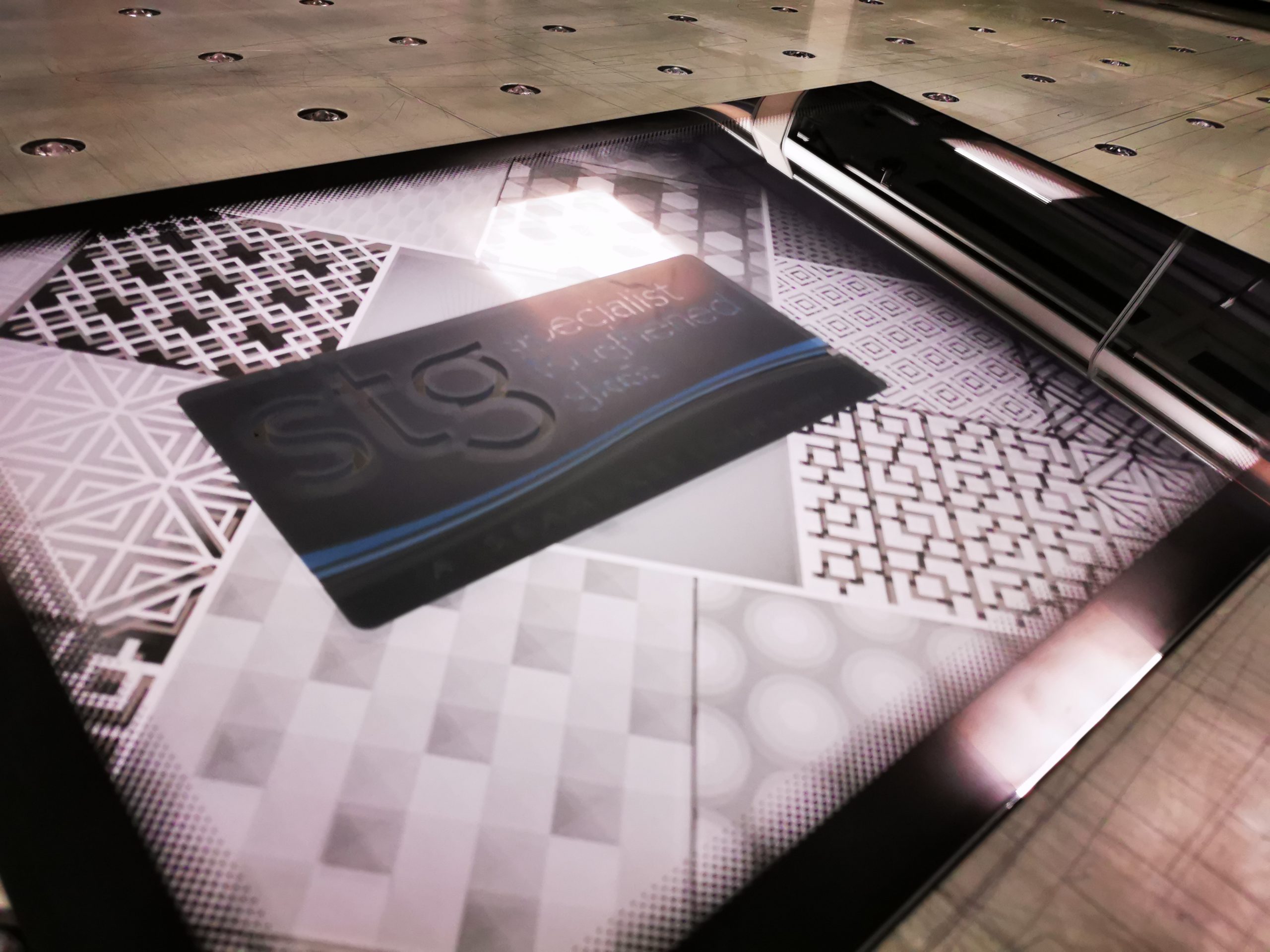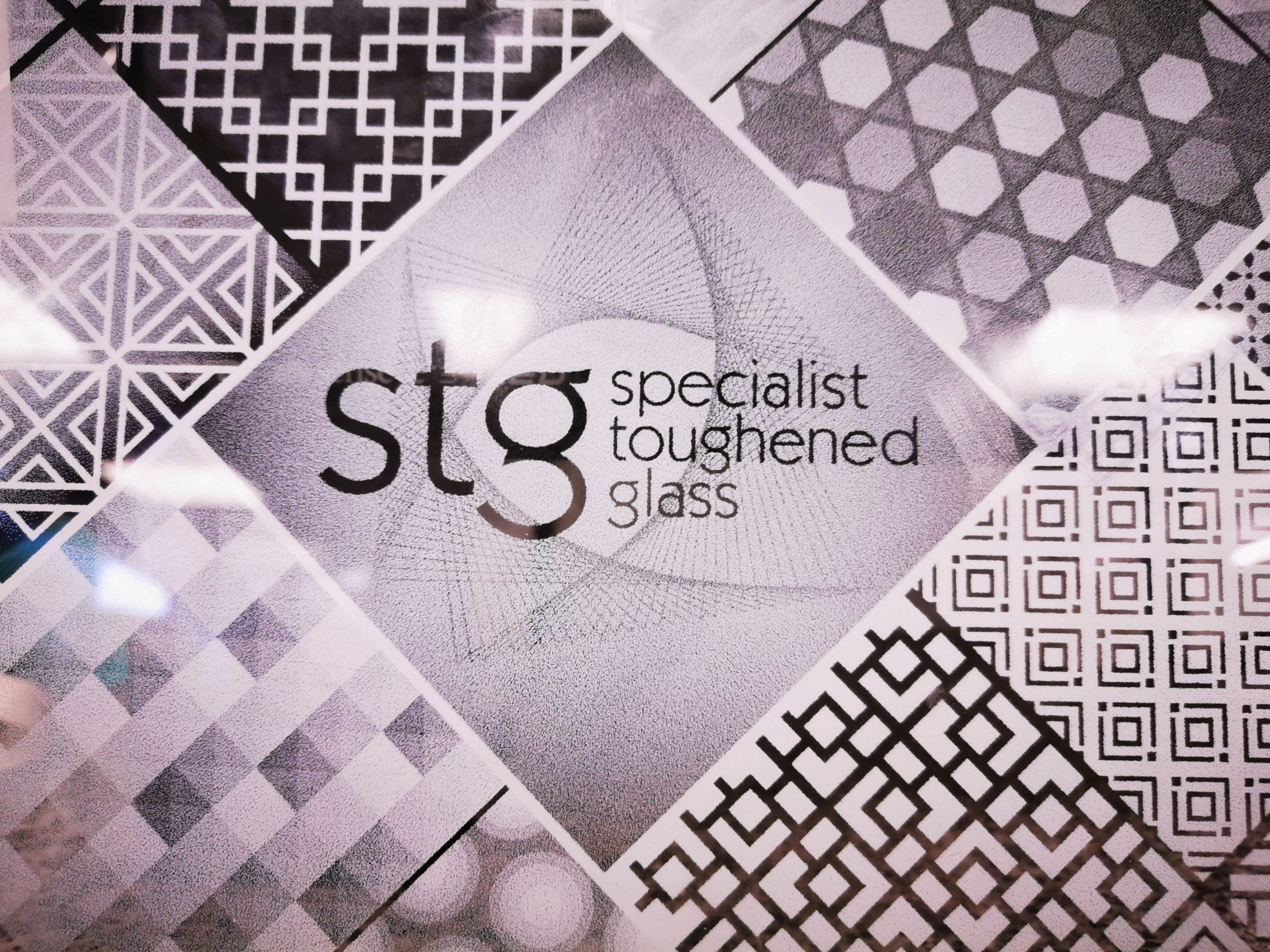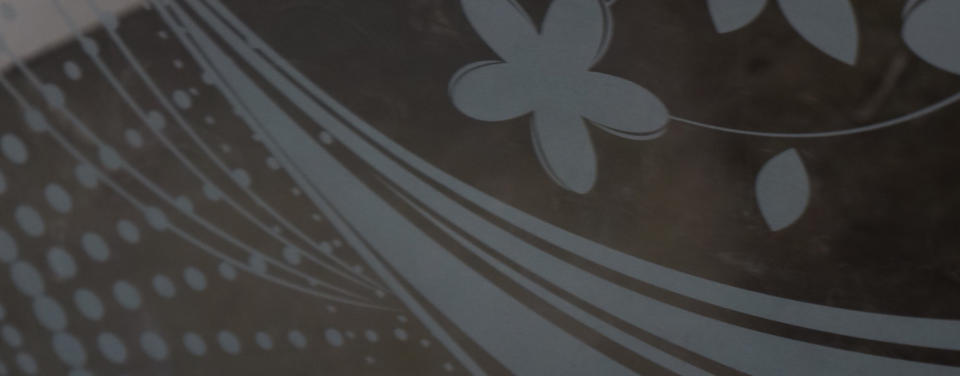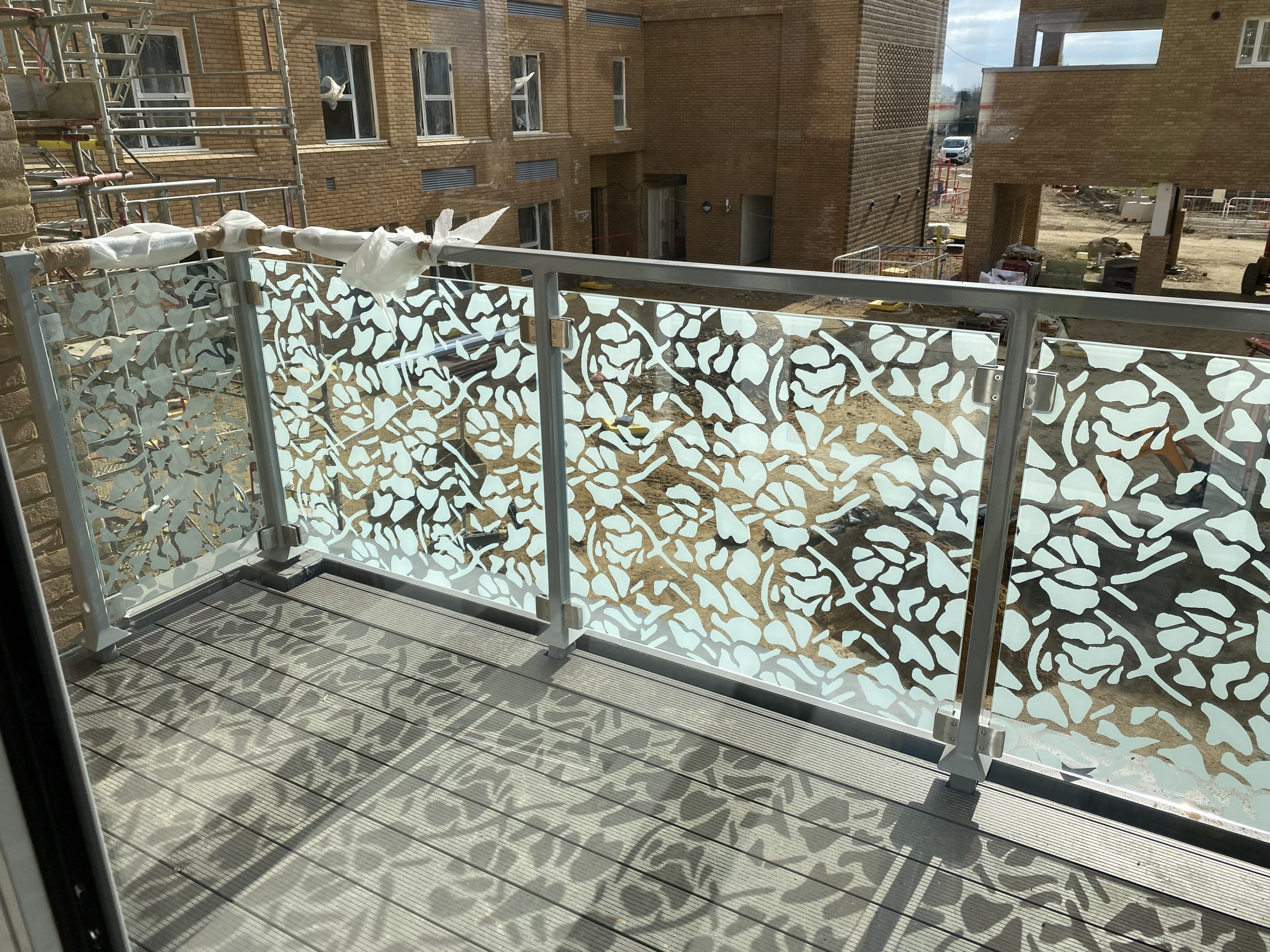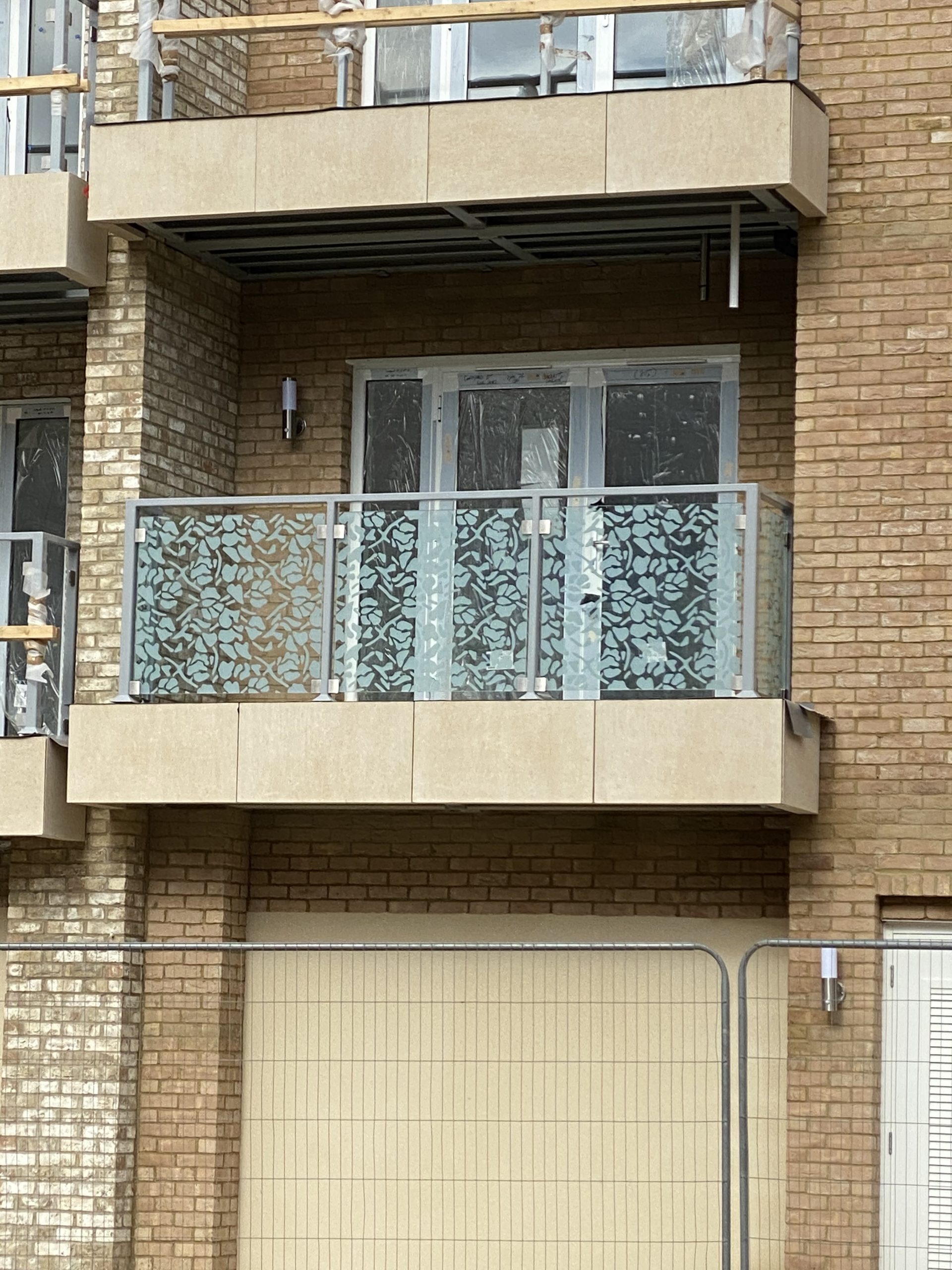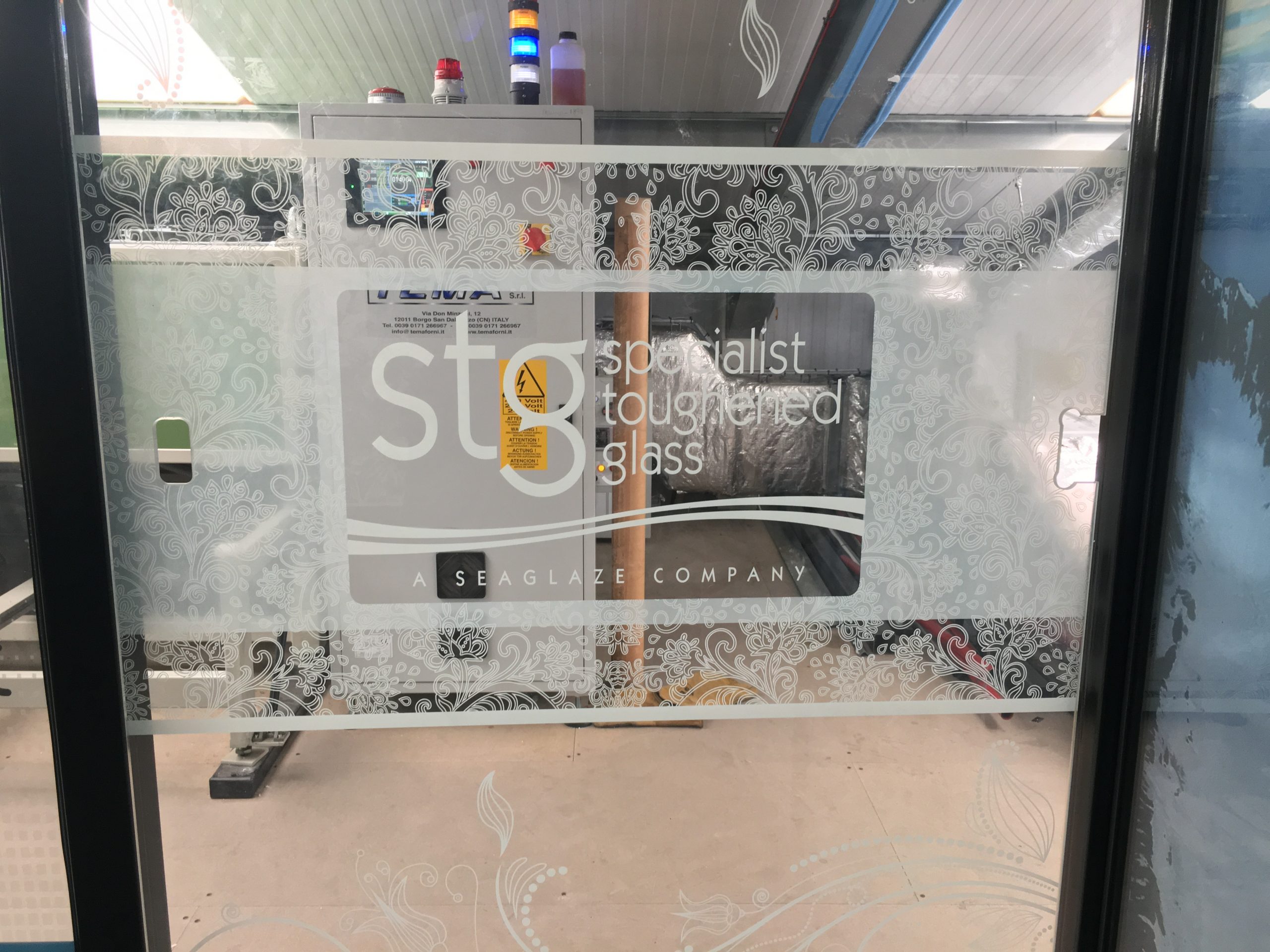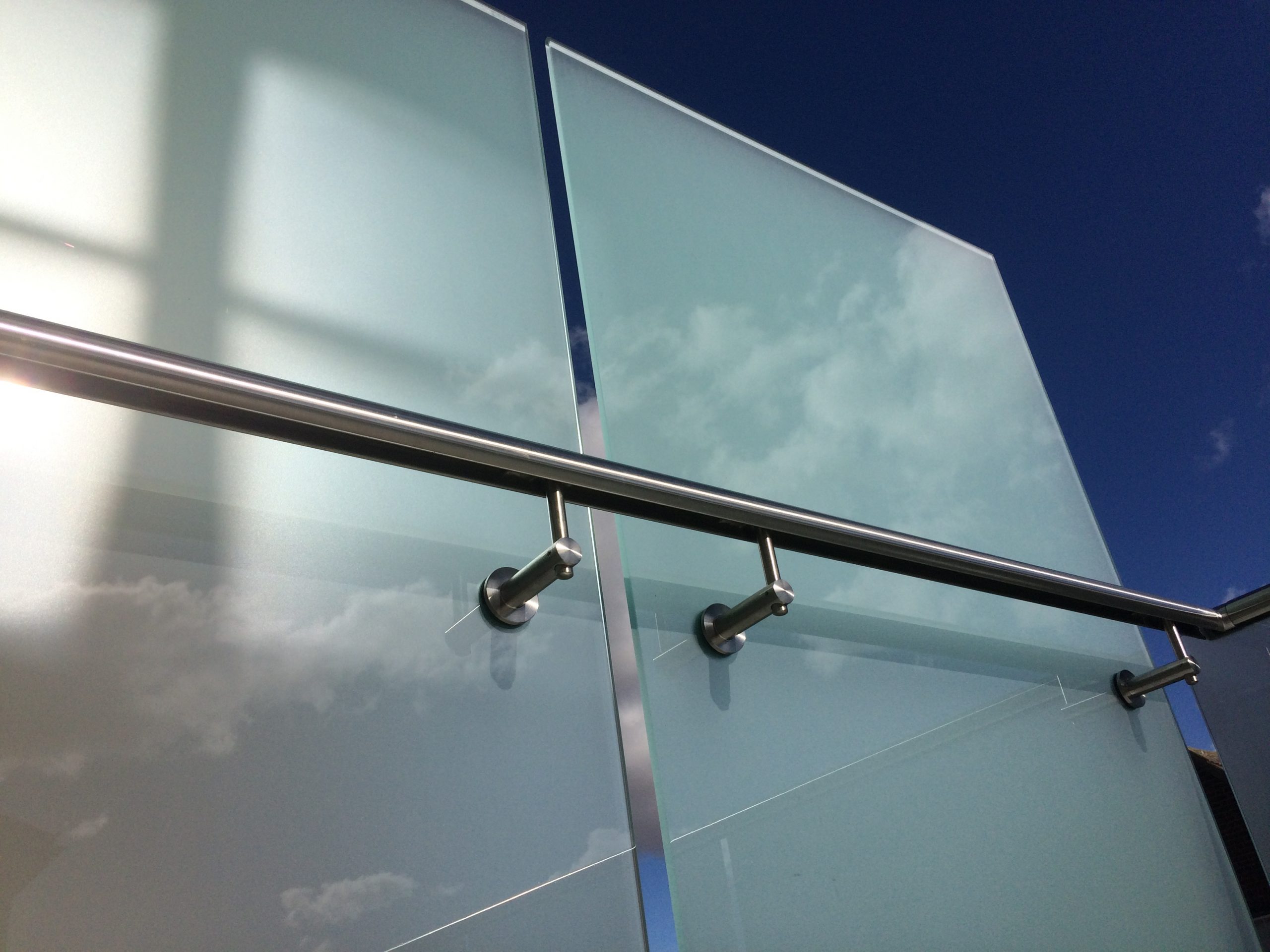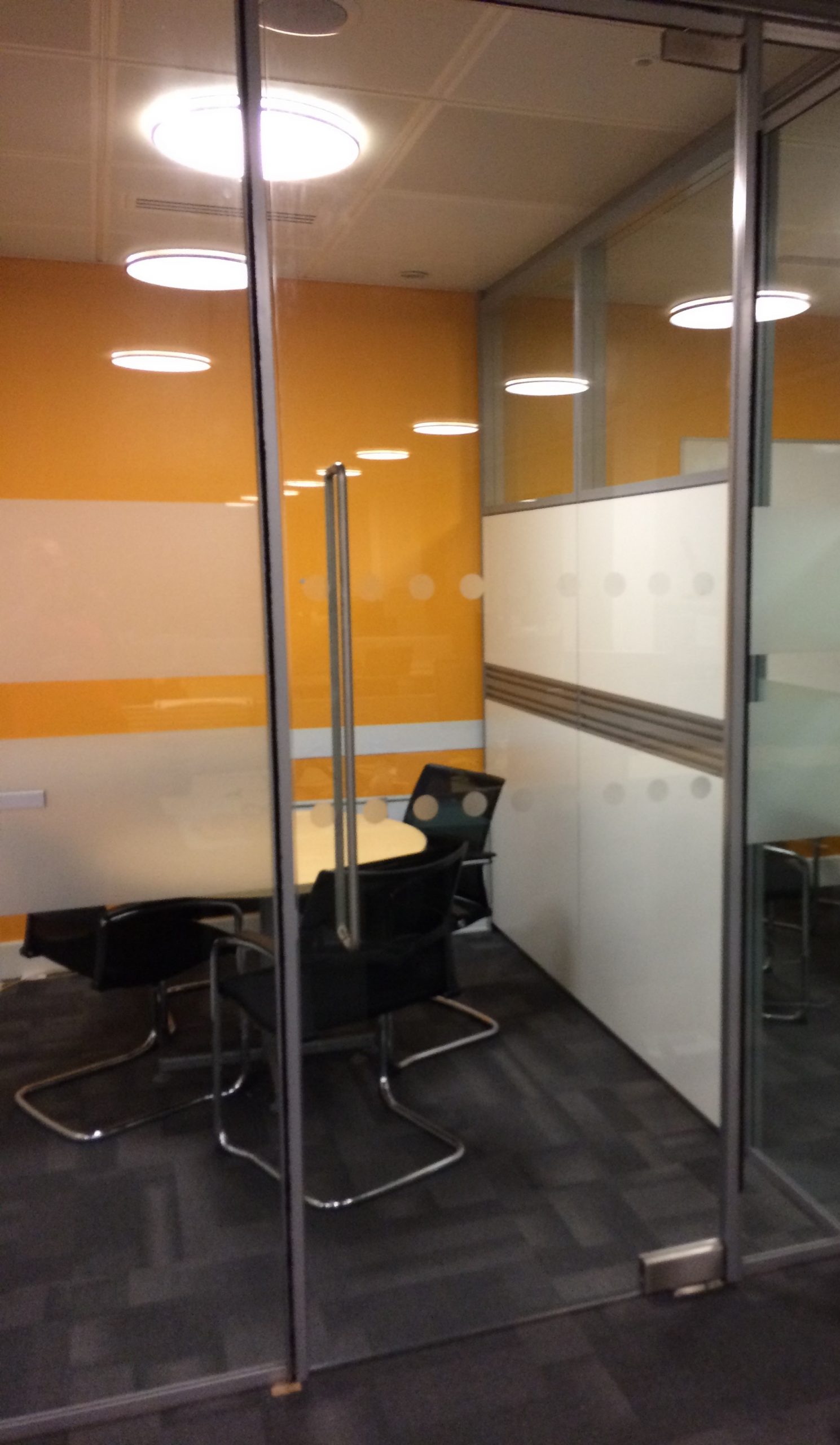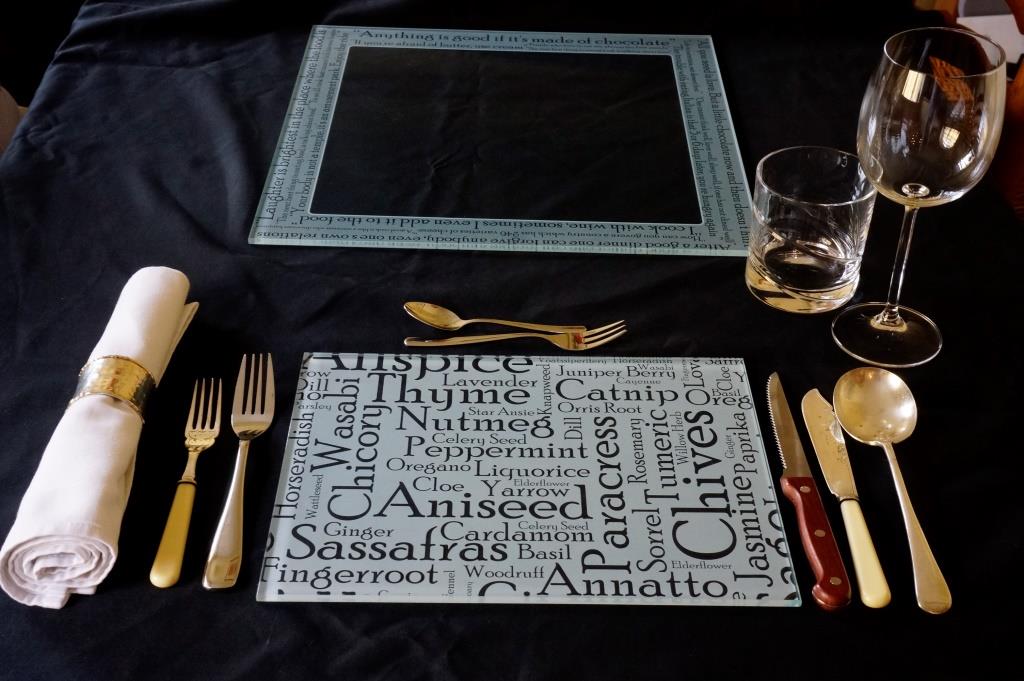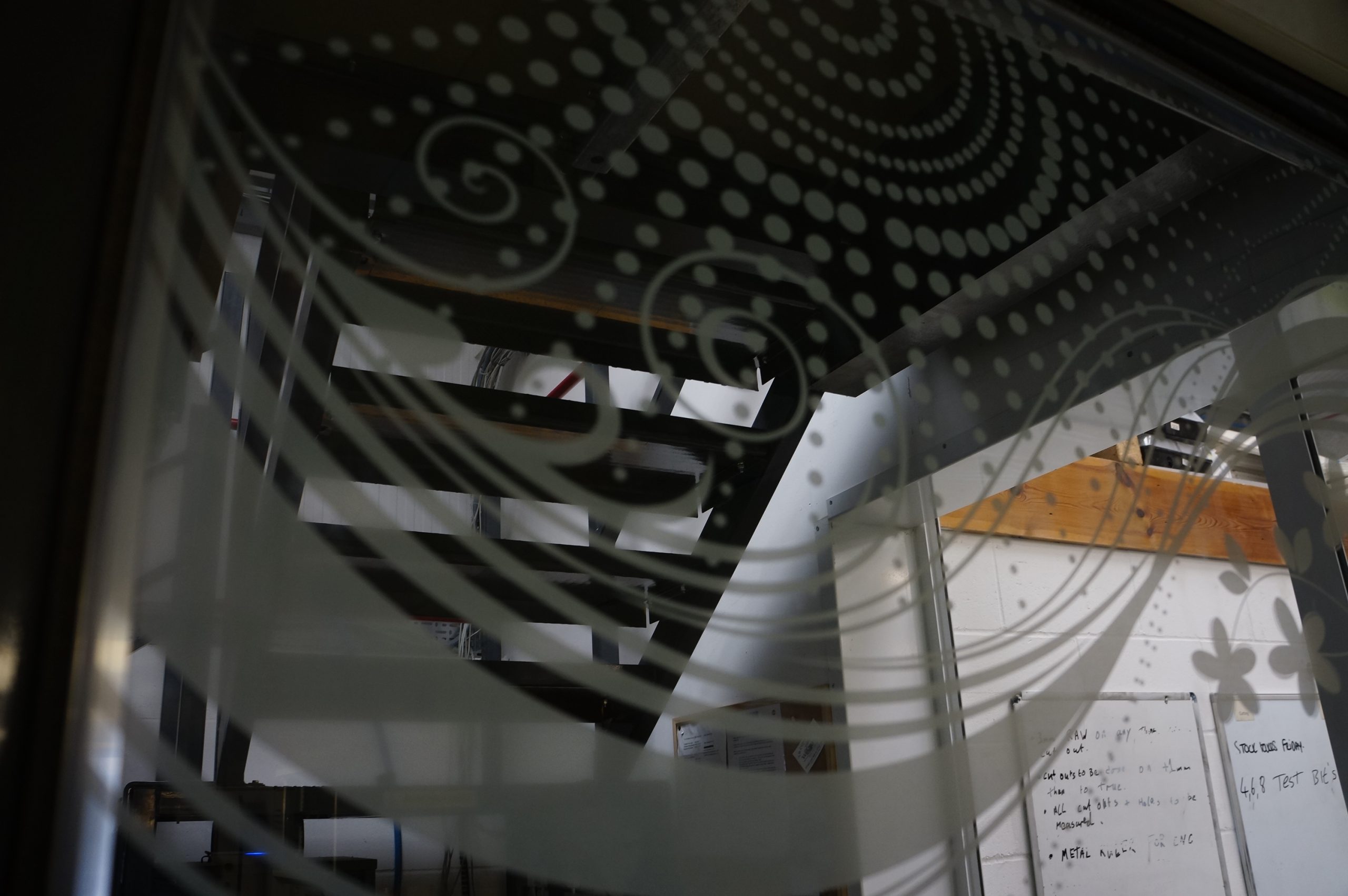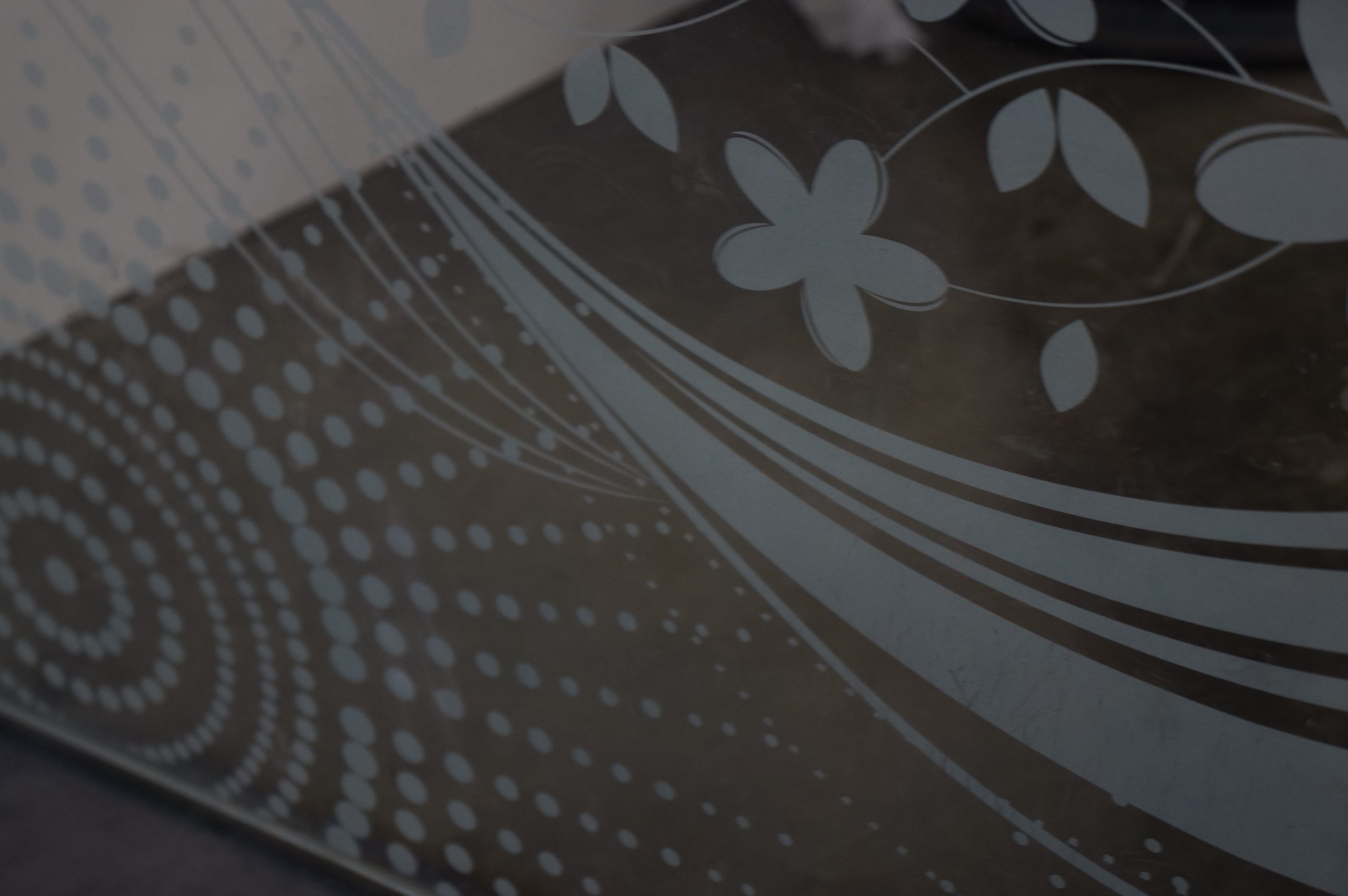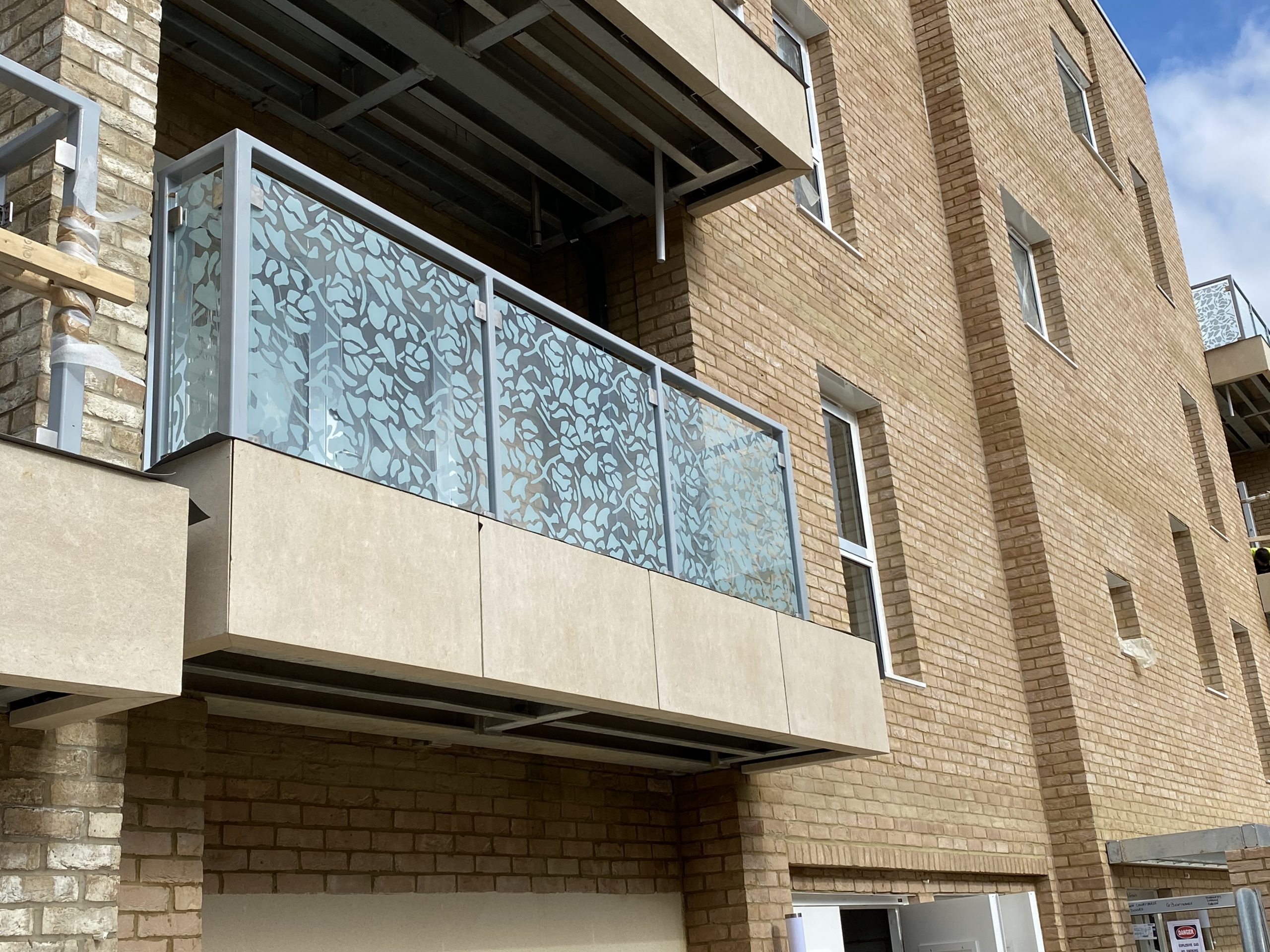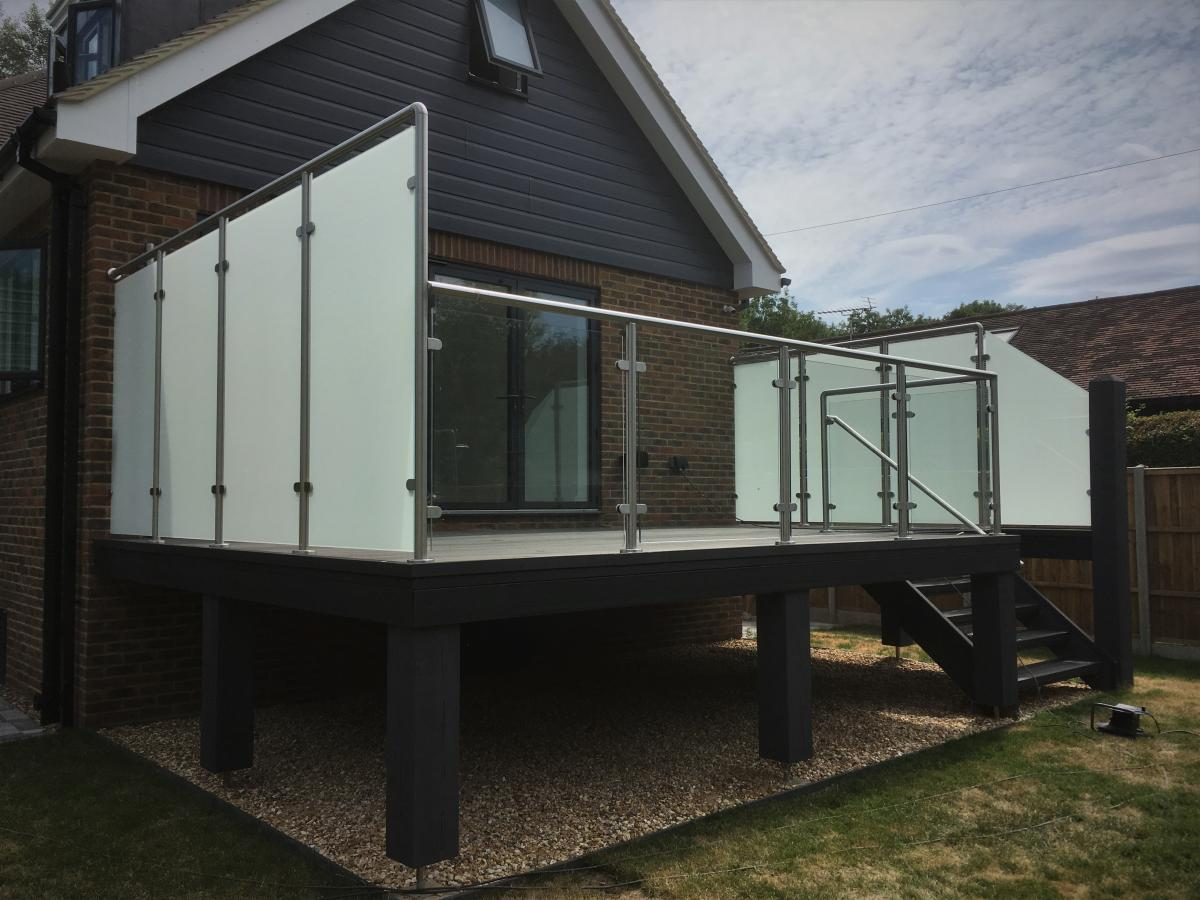Etch Effect Printing
Through multiple trials of Research and Development, our Senior Print Technician developed a special printing technique that produces a print finish that is meant to resemble glass that has been sandblasted or coated using an acid etch.
The process uses a very fine spray of white ink set to special parameters which affect the micron depth, dot structure and overall thickness of the ink as it layers itself between passes over the glass, resulting in a versatile and easily editable print while staying true to the desired outcome.
Not only is a completely solid etch possible across the entire face of the glass, but also patterns of varying complexities and opacities that can be mixed with other modes and colours provided by the printer to create unique designs that would not be possible through etching or sandblasting alone.
Print thickness ranges created from single or multi-pass printing can vary between 20 and 60 Microns with brighter whites and in turn, less realistic etch effects expected the higher the micron number is increased.
Unlike satin glass which becomes transparent when in contact with EVA interlayer films, printed etch designs can be laminated inside units (sandwiched between the two panes of glass) without becoming transparent while also gaining added protection from chemical abrasion and environmental wear and tear.

